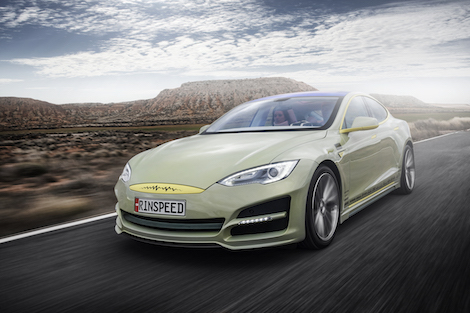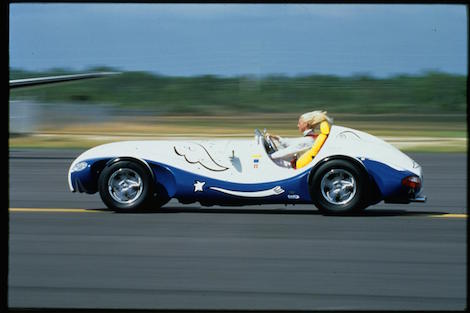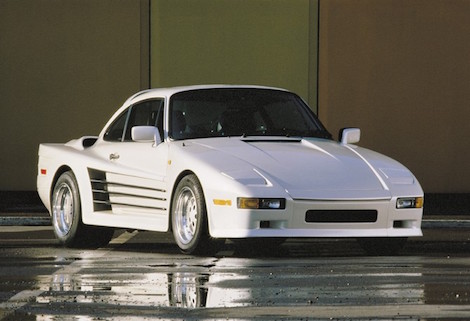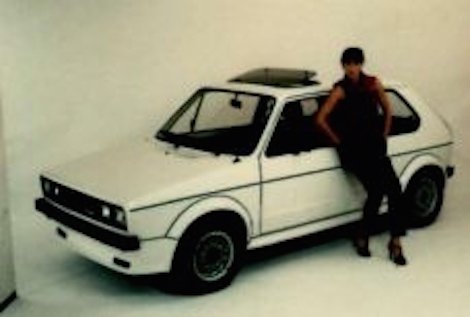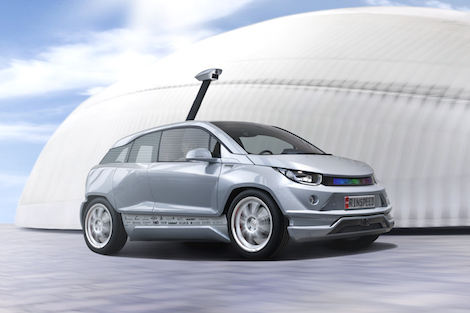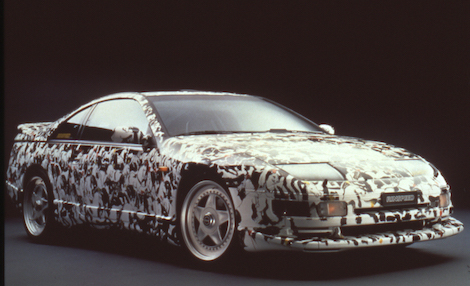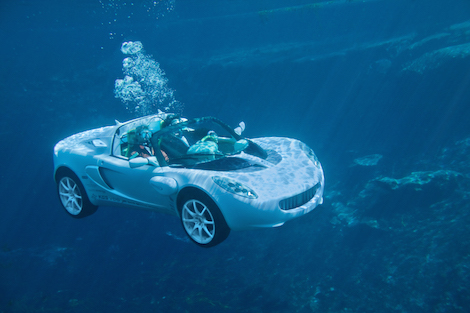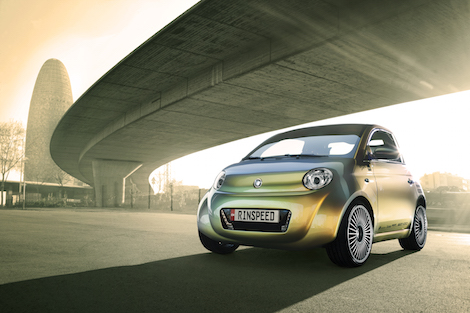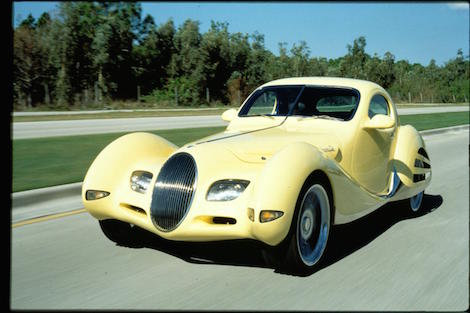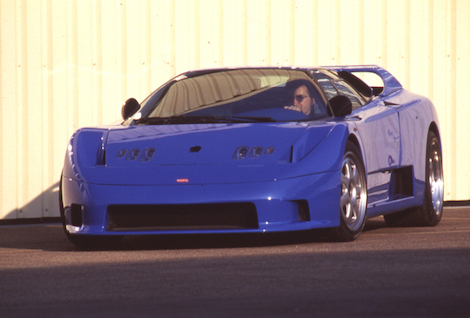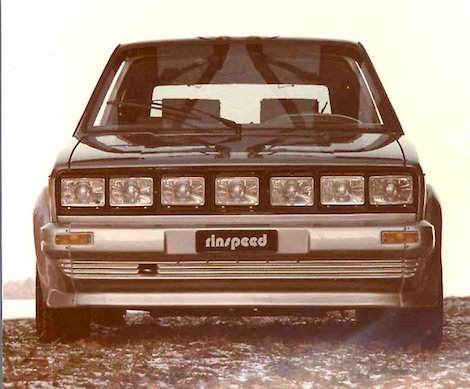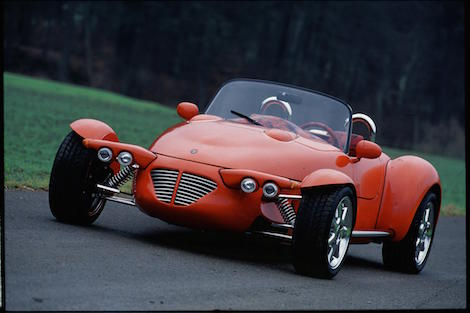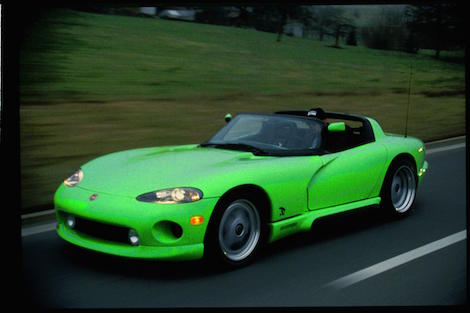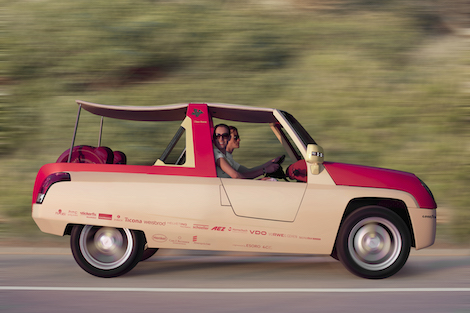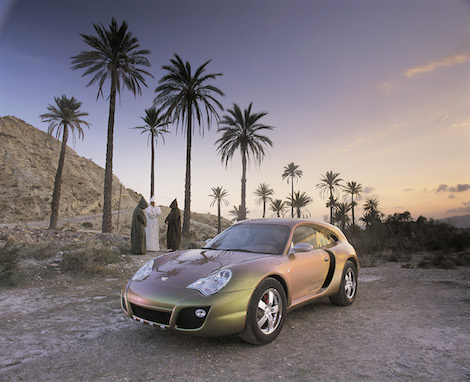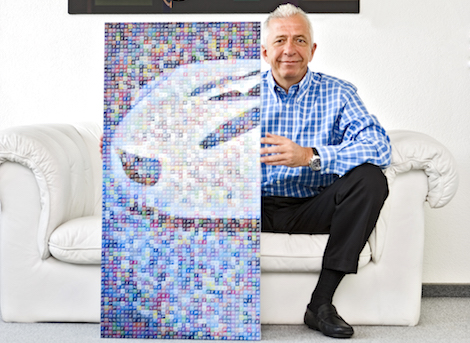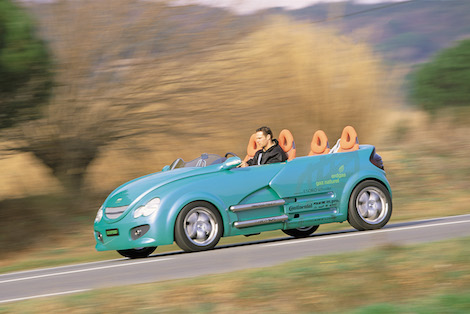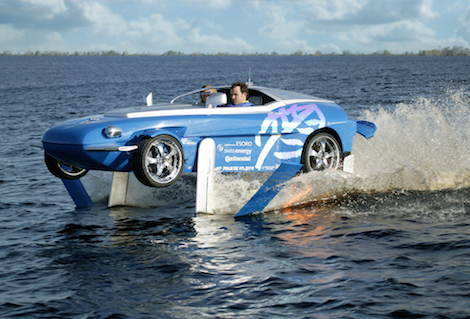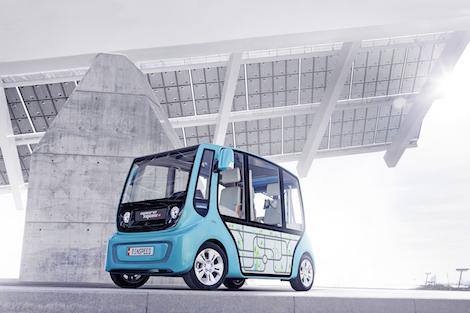Switzerland.
The land of Toblerone, cuckoo clocks, banks with questionable practices and some of the most draconian road traffic laws in the world - massive fines and/or ban for speeding and requirement to have official paperwork for any car part not OEM. Fancy some new alloy wheels or even a loud exhaust? Off to the StrassenVerkehrsAmt (Road Transport Authority) with you then and hope that your modifications pass muster otherwise you'll have to take them off or risk your car being declared illegal should you decide otherwise.
Not then the ideal country for setting up a tuning company that specialises in high performance cars from the likes of Porsche and Lamborghini. Not that Frank M. Rinderknecht cares. As the boss of Rinspeed, Rinderknecht has been modifying cars since 1979 when his company presented its first car, the Golf GTI-based Golf Turbo, at the Geneva Motor Show. However, the Rinspeed story starts much earlier than that. Frank's first experience in the world of tuning came when he was 14 when, after fettling with the engine on his 50cc moped, he doubled the top speed - from a lowly 40km/h to a lofty 80km/h. After that, the bug bit hard.
Five years of tinkering with car and bike engines was followed by a trip to the United States that would change everything. While living in Los Angeles Frank worked with a company that specialised in making cars and vans wheelchair accessible and it was there that he was introduced to the notion of the sunroof. With the proliferation of panoramic roofs on modern cars, it seems strange to imagine a time when one had to travel to LA to see a basic, leaky, sunroof, but that is what Frank did and when he returned to his native Zurich, he started to import sunroofs from the US while also continuing his work in wheelchair conversions.
With this work paying the bills, Frank could focus his attention on what he loved and at the 1979 Geneva Motor Show the first ever Rinspeed concept was unveiled. Dubbed the Golf Turbo, it was a Mk1 GTI with the first ever square headlight conversion. May not seem like much but that car garnered a lot of attention for the Swiss company and soon the tuning arm of Rinspeed Garage was contributing as much to the coffers as the sunroof and wheelchair conversions.
The Golf Turbo was followed two years later by the Aliporta, a Golf with a bigger turbo, Porsche 928 interior and of course the gull-wings that would become something of a signature for Rinspeed. The price for such a car was 100,000 Swiss francs (1981 price) and the owner had to supply the Golf GTI to begin with.
After that, Rinspeed began to acquire the Swiss rights for some of the world's top tuning brands - becoming the only tuner in Switzerland that could offer the likes of AMG (pre-Mercedes take over) and AC Schnitzer. From that point, Rinspeed's entry into the Geneva Motor Show served as advertisements for its tuning business. Case in point - 1985's R69 Turbo.
Launched at a time when every wannabe Gordon Gekko yuppie was driving a 930-generation Porsche 911, the R69 Turbo was a way to stand out from the crowd. And how it stood out, what with its Ferrari Testarossa inspired side strakes. The slat-nosed 930 (complete with factory fitted Tartan Dress interior) is the epitome of 1980's excess, but it is estimated that between 200 and 300 R69s were produced. Rinderknecht's own R69 recently appeared for sale in the UK for an undisclosed price.
Rinspeed concentrated on Porsches (at least from a Geneva point of view - customers could order whatever they wanted) until the early 1990s when the Nissan Speedart debuted. Based on a Nissan 300ZX the Speedart featured 420 hand painted horses by artist Rolf Knie.
This would mark Rinspeed's move into 'concepts for the sake of concepts' that we know now. While obviously still serving as advertisements for the company (Rinderknecht has previously stated that: "The cars are all our publicity money for one year, concentrated"), they are designed as one-offs, showcases for the engineering and tuning work that Rinspeed can do as well as the design talents of the five full- and three part-time staff members rather than a display of off the shelf tuning parts as before.
The following three cars - the Dodge Viper based Veleno,
Bugatti EB110 based Cyan
and Chrysler PT Cruiser based Roadster R - continued in this same vein: mildly tweaked versions of road cars designed to showcase the possibilities.
Then came the 1996 Yello Tablo. Built in conjunction with Swiss electronic group Yello (hence the name) the Tablo had all the looks of a gorgeous Figoni et Falachi bodied Talbot Lago coupés, but with modern conveniences such as a fibre optic controlled Pioneer stereo system and a receptacle on the steering wheel for a custom designed watch. Oh, and a stonking great supercharged 5.0-litre V8 engine up front.
Then Frank and his team got a little bit 'out there' with cars such as the 1930's race car inspired Mono Ego; the Rone - a sports car that ran on biofuel made from kitchen and garden waste;
and the Mercedes-Benz A-Class based Presto, a car that featured an extendable body moving from two-seat roadster to four-seat convertible at the flick of a switch.
This 'transforming car' idea was followed by 2003's Bedouin; a Porsche Cayenne that could alternate between two-seat pick-up truck and four-seat SUV.
Maybe Rinderknecht and his team spent too much time watching Michael Bay movies, but the idea of the 'Transformers' stuck and the Bedouin was followed by the Splash, a sports car that could convert to a hydrofoil that 'flew' across water at speeds of up to 80km/h (approx. 45 knots).
Perhaps the most famous of Rinspeed's transforming cars is the sQuba. Looking to recreate James Bond's iconic Lotus Esprit submarine car, Rinspeed started with an Elise. "For three decades I have tried to imagine how it might be possible to build a car that can fly under water. Now we have made this dream come true." The sQuba retains the Elise's open top body style, as that is how it submerges - drive into a body of water and it will float, you have to open the door and let the water in to descend. Diving equipment allows the occupants to breath while the electric motors that replaced the petrol engine power the screws for movement. The sQuba features a special salt-water resistant interior with mother of pearl trim and diamond plated inlays from the world of high-tech abrasives.
Since the sQuba, Rinspeed has moved from its Transformers phase into a future mobility one beginning with the UC? (Urban Commuter - with an arbitrary question mark). Looking like a smart car that has been through a hot cycle, the all-electric UC? is less than 2.6 metres long and has been designed to be loaded directly onto trains allowing for an integrated transportation system. Unlike many of the concepts that came before it, the UC? was designed for series production and Rinspeed offered the technology out to larger manufacturers to produce.
The BamBoo that followed expanded on this urban commuter idea with on on-board bicycle for 'last mile' transportation.
Rinspeed's 2003 MicroMax appears to bridge the gap between public and private transportation. Smaller in length than a MINI One, the MicroMax has space for four with the three passengers standing rather than sitting in the rear compartment. There is also space for a pram and/or bicycle for those looking to go further afield. The real star of the concept however is the 'swarm' technology from Harman. By communicating with each other over the cloud a fleet of MicroMaxes can operate as one or individually; imagine a train where every carriage has its own driver who is free to stop wherever he needs but always knows where the rest of the carriages are so he can catch up. Should a commuter miss the first MicroMax in a queue another will surely be along soon to pick them up with information relayed to driver and commuter via a smartphone app. Bye bye 'I missed the bus' excuses.
At the 2014 show, Rinspeed added autonomous cars to its fleet with the Tesla based XchangE. Designed for longer journeys than the likes of the UC? or MicroMax, the XchangE features an innovative cockpit with swivel chairs up front so, once the car takes control, driver and passenger can turn around to play a game of cards with those behind. Or watch a movie or have a snooze, whatever, the car is in control so you are free to do as you wish.
The autonomous idea was again touched upon with this year's BMW i3 based Budii, a car that serves up the steering wheel to you should the road ahead look interesting enough for you to take the helm.
We may laugh and scoff at some of Rinspeed's concepts but it is clear that Frank Rinderknecht and his team can afford to be a touch more creative than their counterparts within mainstream manufacturing. We may never see a Rinspeed production car or even a production car with Rinspeed technology, but if innovators such as Rinderknecht can inspire the next generation of engineers and designers maybe we will see the 'son of Budii' or 'son of sQuba' on the roads in a few years' time.


